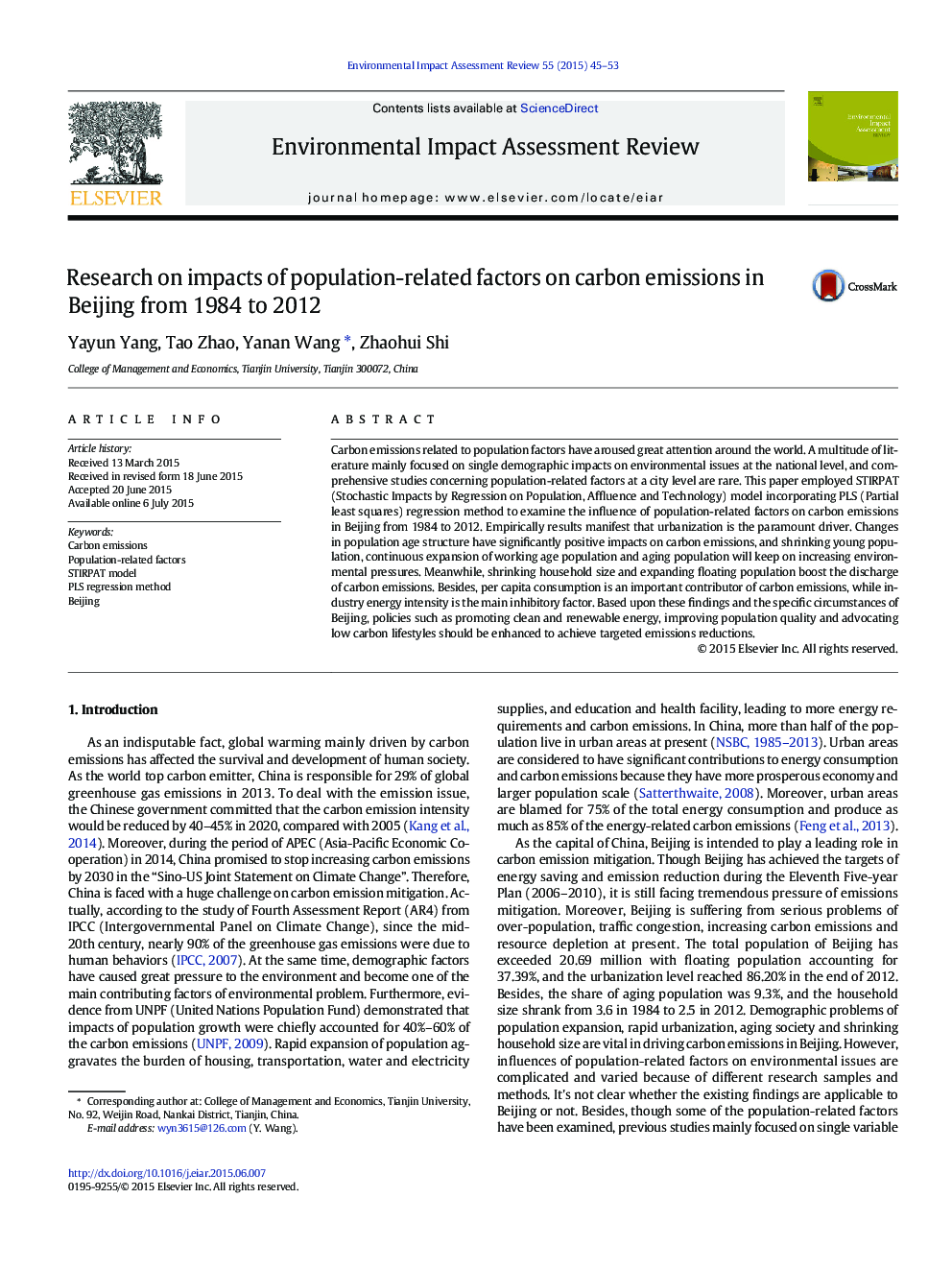| Article ID | Journal | Published Year | Pages | File Type |
|---|---|---|---|---|
| 7465204 | Environmental Impact Assessment Review | 2015 | 9 Pages |
Abstract
Carbon emissions related to population factors have aroused great attention around the world. A multitude of literature mainly focused on single demographic impacts on environmental issues at the national level, and comprehensive studies concerning population-related factors at a city level are rare. This paper employed STIRPAT (Stochastic Impacts by Regression on Population, Affluence and Technology) model incorporating PLS (Partial least squares) regression method to examine the influence of population-related factors on carbon emissions in Beijing from 1984 to 2012. Empirically results manifest that urbanization is the paramount driver. Changes in population age structure have significantly positive impacts on carbon emissions, and shrinking young population, continuous expansion of working age population and aging population will keep on increasing environmental pressures. Meanwhile, shrinking household size and expanding floating population boost the discharge of carbon emissions. Besides, per capita consumption is an important contributor of carbon emissions, while industry energy intensity is the main inhibitory factor. Based upon these findings and the specific circumstances of Beijing, policies such as promoting clean and renewable energy, improving population quality and advocating low carbon lifestyles should be enhanced to achieve targeted emissions reductions.
Keywords
Related Topics
Physical Sciences and Engineering
Energy
Renewable Energy, Sustainability and the Environment
Authors
Yayun Yang, Tao Zhao, Yanan Wang, Zhaohui Shi,
